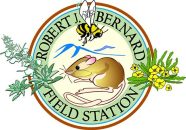Fiastro, Anna (2011)
Foraging decisions and social structure of the Western Scrub Jay, Aphelocoma californica.
Bachelor of Arts, Scripps College.
Advisor: Rachel Levin.
How do birds that are generalist feeders make their foraging decisions? Research has shown that Western scrub jays have high levels of cognitive ability, no innate color preferences and learn to avoid noxious foods. I hypothesized that scrub jays would apply learned color avoidance to a broader array of foods in making food choices. I predicted that jays would not have an innate preference for blue or red sunflower seeds and could be trained to avoid noxious blue seeds. I also predicted that jays would subsequently avoid palatable blue peanuts. Furthermore, I hoped to expand the one field study of scrub jay social dynamics to an additional population. I captured and banded the BFS population, and monitored social groupings. I also conducted feeding trials, finding that jays did not have a preference for blue or red sunflower seeds. I was unable to complete tests for learned avoidance and generalist behavior due to the changing social dynamics of the birds. I found that there are seasonal social changes in population structure — birds paired and bred in the summer, and, unlike what was noted previously, in the winter, there was an influx of large unbanded flocks that foraged primarily on acorns.
